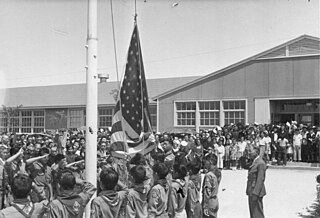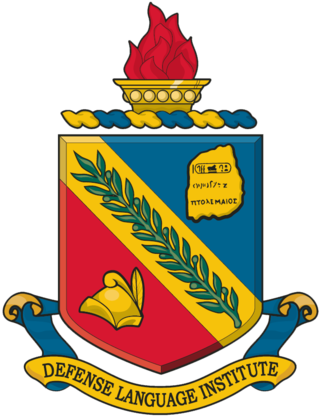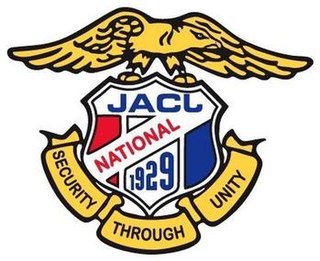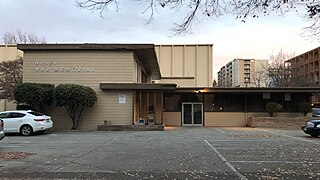
During the early years of World War II, Japanese Americans were forcibly relocated from their homes on the West Coast because military leaders and public opinion combined to fan unproven fears of sabotage. As the war progressed, many of the young Nisei, Japanese immigrants' children who were born with American citizenship, volunteered or were drafted to serve in the United States military. Japanese Americans served in all the branches of the United States Armed Forces, including the United States Merchant Marine. An estimated 33,000 Japanese Americans served in the U.S. military during World War II, of which 20,000 joined the Army. Approximately 800 were killed in action.

During World War II, the United States, by order of President Franklin D. Roosevelt, forcibly relocated and incarcerated at least 125,284 people of Japanese descent in 75 identified incarceration sites. Most lived on the Pacific Coast, in concentration camps in the western interior of the country. Approximately two-thirds of the inmates were United States citizens. These actions were initiated by Executive Order 9066 following Imperial Japan's attack on Pearl Harbor. Of the 127,000 Japanese Americans who were living in the continental United States at the time of the Pearl Harbor attack, 112,000 resided on the West Coast. About 80,000 were Nisei and Sansei. The rest were Issei immigrants born in Japan who were ineligible for U.S. citizenship under U.S. law.

The Defense Language Institute (DLI) is a United States Department of Defense (DoD) educational and research institution consisting of two separate entities which provide linguistic and cultural instruction to the Department of Defense, other federal agencies and numerous customers around the world. The Defense Language Institute is responsible for the Defense Language Program, and the bulk of the Defense Language Institute's activities involve educating DoD members in assigned languages, and international personnel in English. Other functions include planning, curriculum development, and research in second-language acquisition.

Japantown, commonly known as J Town, is a historic cultural district of San Jose, California, north of Downtown San Jose. Historically a center for San Jose's Japanese American and Chinese American communities, San Jose's Japantown is one of only three Japantowns that still exist in the United States, alongside San Francisco's Japantown and Los Angeles's Little Tokyo.

Japantown (日本人街) is a common name for Japanese communities in cities and towns outside Japan. Alternatively, a Japantown may be called J-town, Little Tokyo or Nihonmachi (日本町), the first two being common names for Japantown, San Francisco, Japantown, San Jose and Little Tokyo, Los Angeles.

The Japanese American Citizens League is an Asian American civil rights charity, headquartered in San Francisco, with regional chapters across the United States.

John Fujio Aiso was an American nisei military leader, lawyer and judge. Aiso was the Director and head instructor of the Military Intelligence Service Language School, and the highest-ranking Japanese American in the U.S. Army during World War II. He was also the first Japanese American appointed as a judge in the contiguous United States.

Camp Savage is the former site of the U.S. Military Intelligence Service language school operating during World War II. The school itself was established in San Francisco, but was moved in 1942 to Savage, Minnesota. The purpose of the school was to teach the Japanese language to military personnel and civilians involved in the war effort. This skill could then be used to interrogate prisoners of war, translate captured documents, serve as interpreters with Japanese civilians, and aid in the American war effort. The program was later moved to Fort Snelling in St. Paul, Minnesota.

The Go for Broke Monument in Little Tokyo, Los Angeles, California, commemorates Japanese Americans who served in the United States Army during World War II. It was created by Los Angeles architect Roger M. Yanagita whose winning design was selected over 138 other submissions from around the world.

The Jerome War Relocation Center was a Japanese American internment camp located in southeastern Arkansas, near the town of Jerome in the Arkansas Delta. Open from October 6, 1942, until June 30, 1944, it was the last American concentration camp to open and the first to close. At one point it held as many as 8,497 detainees. After closing, it was converted into a holding camp for German prisoners of war. Today, few remains of the camp are visible, as the wooden buildings were taken down. The smokestack from the hospital incinerator still stands.

The Rohwer War Relocation Center was a World War II Japanese American concentration camp located in rural southeastern Arkansas, in Desha County. It was in operation from September 18, 1942, until November 30, 1945, and held as many as 8,475 Japanese Americans forcibly evacuated from California. Among the inmates, the notation "朗和" was sometimes applied. The Rohwer War Relocation Center Cemetery is located here, and was declared a National Historic Landmark in 1992.
Hiroshi Kashiwagi was a Nisei poet, playwright and actor. For his writing and performance work on stage he is considered an early pioneer of Asian American theatre.

The Military Intelligence Service was a World War II U.S. military unit consisting of two branches, the Japanese American unit and the German-Austrian unit based at Camp Ritchie, best known as the "Ritchie Boys". The unit described here was primarily composed of Nisei who were trained as linguists. Graduates of the MIS language school (MISLS) were attached to other military units to provide translation, interpretation, and interrogation services.

Roy Hiroshi Matsumoto was a Japanese-American soldier who fought with the Merrill's Marauders during World War II. He received several awards for his contribution including the Bronze Star Medal and the Legion of Merit.

Japanese Americans are Americans of Japanese ancestry. Japanese Americans were among the three largest Asian American ethnic communities during the 20th century; but, according to the 2000 census, they have declined in ranking to constitute the sixth largest Asian American group at around 1,469,637, including those of partial ancestry.
Soji Kashiwagi is a Sansei journalist, playwright and producer. He is the Executive Producer for the Grateful Crane Ensemble theatre company in Los Angeles. He has contributed to The Rafu Shimpo with his column, "Corner Store." He is the son of Nisei playwright Hiroshi Kashiwagi.
The Nichi Bei Times is a Japanese American news agency operated by the Nichi Bei Foundation and headquartered in San Francisco. As of 2009 it was the oldest Japanese American newspaper in Northern California.
There is a Japanese American and a Japanese national population in San Francisco and the San Francisco Bay Area. The center of the Japanese and Japanese American community is in San Francisco's Japantown.

Masaji Marumoto was the first Japanese American Justice of the Supreme Court of Hawaii. He served from 1956 to 1973. He was the first Japanese American to graduate from Harvard Law School, and the first Japanese American to serve as president of the Hawaii Bar Association.

Nisei Memorial VFW Post 8985 was founded in 1947 by Japanese-American World War II veterans of the 442nd RCT and the Military Intelligence Service in Sacramento, California. Its members would form the first of 14 segregated Nisei VFW posts chartered in California. The post's clubhouse, originally built as a restaurant, was purchased with assistance from the local JACL in 1955, and is now the last remaining property associated with what was once Sacramento's historic Japantown.
















